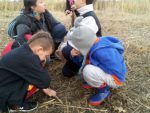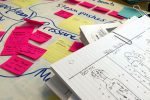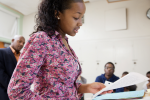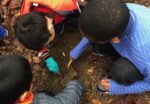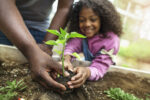Practice Briefs
These very short pieces highlight ways of working on specific issues that come up during STEM teaching. You can browse them below or easily flip through and browse the entire collection online. If you would like to browse or download the entire collection of tools as eye-catching PDFs, check out: http://STEMteachingtools.org/link/PDFcollection/
We're translating our collection of tools for science education into Spanish. Click here to read the STEM Teaching Tools that have been translated.
Estamos trabajando para traducir las STEM Teaching Tools en español. Hagan click aquí para leer las STEM Teaching Tools (STT) que han sido traducidas.
- Assessment
- Background
- Culture
- Engineering
- Equity
- ESPAÑOL
- Implementation
- Informal Ed
- Instruction
- Practices
Enter your email below to receive periodic updates about new tools. This is a low-volume email list, and we promise not to share your address with others.
Tweets by @STEMTeachTools
 Practice Brief 1
Practice Brief 1
Is it important to distinguish between the explanation and argumentation practices in the classroom?
 Practice Brief 2
Practice Brief 2
Why should students investigate contemporary science topics—and not just "settled" science?
 Practice Brief 3
Practice Brief 3
Practices should not stand alone: How to sequence practices in a cascade to support student investigations
 Practice Brief 4
Practice Brief 4
Are there multiple instructional models that fit with the science and engineering practices in NGSS? (Short answer: Yes.)
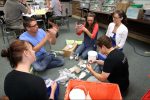 Practice Brief 5
Practice Brief 5
Using curriculum adaptation as a strategy to help teachers learn about NGSS and developing aligned instructional materials
 Practice Brief 6
Practice Brief 6
How Can I Get My Students to Learn Science by Productively Talking with Each Other?
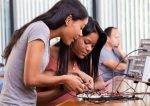 Practice Brief 7
Practice Brief 7
Learning STEM Through Design: Students Benefit from Expanding What Counts as "Engineering"
 Practice Brief 8
Practice Brief 8
What is meant by engaging youth in scientific modeling?
 Practice Brief 9
Practice Brief 9
How should districts and schools focus professional development when starting to implement NGSS?
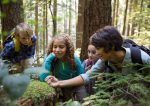 Practice Brief 12
Practice Brief 12
Scientific literacy involves understanding global climate change & what people can do about it
 Practice Brief 13
Practice Brief 13
Professional Development that Supports Teacher Learning about the New Vision for Science Education
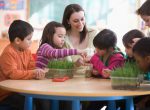 Practice Brief 14
Practice Brief 14
Next Generation Science Standards: What’s different, and do they matter?
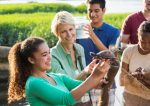 Practice Brief 15
Practice Brief 15
Overview: How can we promote equity in science education?
 Practice Brief 16
Practice Brief 16
Research Brief: The Informal Formative Assessment Cycle as a Model for Teacher Practice
 Practice Brief 17
Practice Brief 17
Beyond the Written C-E-R: Supporting Classroom Argumentative Talk about Investigations
 Practice Brief 18
Practice Brief 18
How teachers can develop formative assessments that fit a three-dimensional view of science learning
 Practice Brief 19
Practice Brief 19
Why should students learn to plan and carry out investigations in science and engineering?
 Practice Brief 20
Practice Brief 20
Getting their hands dirty: Engaging learners in authentic science practices outside the classroom
 Practice Brief 21
Practice Brief 21
What school building administrators should know about the new vision for K-12 science education
 Practice Brief 22
Practice Brief 22
Research Brief: How Teacher Social Networks Support and Constrain Sustainable Reform
 Practice Brief 23
Practice Brief 23
Evaluating Curriculum Materials for Alignment with the New Vision for K-12 Science Education
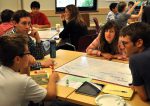 Research Brief: 24
Research Brief: 24
Research Brief: Supporting teacher professional communities to implement school-wide initiatives
 Practice Brief 25
Practice Brief 25
How can formative assessment support culturally responsive argumentation in a classroom community?
 Practice Brief 26
Practice Brief 26
How can assessments be designed to engage students in the range of science and engineering practices?
 Practice Brief 27
Practice Brief 27
Engaging English Learners in the Science and Engineering Practices
 Practice Brief 29
Practice Brief 29
Steps to Designing a Three Dimensional Assessment
 Practice Brief 30
Practice Brief 30
Integrating Science Practices Into Assessment Tasks
 Practice Brief 31
Practice Brief 31
How to launch STEM investigations that build on student and community interests and expertise
 Practice Brief 32
Practice Brief 32
Why focus on science and engineering practices--and not "inquiry?" Why is "the scientific method" mistaken?
 Practice Brief 33
Practice Brief 33
How to design assessments for emerging bilingual students
 Research Brief 34
Research Brief 34
Research Brief: Designing an Assessment System that Measures Three-Dimensional Science Learning
 Practice Brief 35
Practice Brief 35
How can I foster curiosity and learning in my classroom? Through talk!
 Practice Brief 38
Practice Brief 38
What is the role of informal science education in supporting the vision for K-12 science education?
 Practice Brief 39
Practice Brief 39
How can students’ everyday experiences support science learning through engineering design?
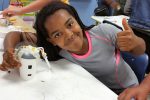 Practice Brief 40
Practice Brief 40
How can Making promote equity and excitement in STEM?
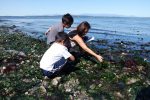 Practice Brief 42
Practice Brief 42
Using Phenomena in NGSS-Designed Lessons and Units
 Practice Brief 43
Practice Brief 43
Why Do We Need to Teach Science in Elementary School?
 Practice Brief 44
Practice Brief 44
Addressing controversial science topics in the K-12 classroom
 Practice Brief 45
Practice Brief 45
How to focus students’ engineering design projects on science learning
 Practice Brief 47
Practice Brief 47
How can I promote equitable sensemaking by setting expectations for multiple perspectives?
 Practice Brief 48
Practice Brief 48
How can teachers guide classroom conversations to support students’ science learning?
 Practice Brief 49
Practice Brief 49
How can mentor teachers and university educators support preservice science teachers?
 Practice Brief 51
Practice Brief 51
Supporting Successful District Implementation of New Science Standards
 Practice Brief 52
Practice Brief 52
Supporting Preservice Teachers with Task-Based Instruction
 Practice Brief 54
Practice Brief 54
How to build an equitable learning community in your science classroom
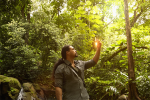 Practice Brief 55
Practice Brief 55
Why it is crucial to make cultural diversity visible in STEM education
 Practice Brief 57
Practice Brief 57
How place-based science education strategies can support equity for students, teachers, and communities
 Practice Brief 58
Practice Brief 58
How can science instruction leverage and develop student interests? Short answer: In so many different ways!
 Practice Brief 59
Practice Brief 59
Creating science learning experiences that support learners receiving special education services
 Practice Brief 60
Practice Brief 60
Designing ‘productive uncertainty’ into investigations to support meaningful engagement in science practices
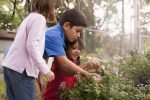 Practice Brief 61
Practice Brief 61
Using science investigations to develop caring practices for social-ecological systems
 Practice Brief 62
Practice Brief 62
What does subject matter integration look like in elementary instruction? Including science is key!
 Practice Brief 63
Practice Brief 63
How to integrate the argumentation from evidence practice into engineering design projects
 Practice Brief 64
Practice Brief 64
Students should generate criteria and constraints for engineering design problems—not just be provided with them
 Practice Brief 65
Practice Brief 65
Using 3D interim assessments to support coherence, equity, and a shared understanding of learning
 Practice Brief 66
Practice Brief 66
Why you should stop pre-teaching science vocabulary and focus on students developing conceptual meaning first
 Practice Brief 67
Practice Brief 67
Focusing Science and Engineering Learning on Justice-Centered Phenomena across PK-12
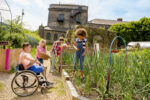 Practice Brief 68
Practice Brief 68
Keeping Climate Science Learning and Instruction Focused on Creating Solutions and Building Community Resilience
 Practice Brief 69
Practice Brief 69
Using Local Phenomena to Communicate Climate Solutions
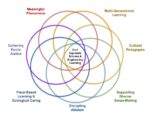 Practice Brief 71
Practice Brief 71
How can you advance equity and justice through science teaching?
 Practice Brief 72
Practice Brief 72
How can arguing from evidence support sensemaking in elementary science?
 Practice Brief 73
Practice Brief 73
Connecting science instruction to neighborhood life through collaborative design with community
 Practice Brief 74
Practice Brief 74
Designing and participating in community and citizen science efforts to support equity and justice
 Practice Brief 75
Practice Brief 75
Using the crosscutting concepts to reflect on and refine your teaching
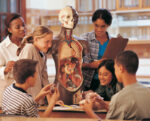 Practice Brief 76
Practice Brief 76
How do we present gender, sex, and sexuality as part of inclusive and accurate science teaching?
 Practice Brief 81
Practice Brief 81
Organizing for educational transformation using Actor-Network Theory
 Practice Brief 82
Practice Brief 82
Supporting observations, wonderings, systems thinking & “Should We” deliberations through Learning in Places
 Practice Brief 83
Practice Brief 83
Steps to Designing Justice-Focused Assessments in Science
 Practice Brief 84
Practice Brief 84
Let’s Talk Climate! Bridging Climate Justice Learning and Action Across School, Home, and Community
 Practice Brief 85
Practice Brief 85
Principals! Here’s what you can do to foster equitable three-dimensional science learning
 Practice Brief 86
Practice Brief 86
How do race and racism connect with science learning in early childhood and elementary classrooms?
 Practice Brief 87
Practice Brief 87
Identifying local environmental justice phenomena for science and engineering investigations
 Practice Brief 89
Practice Brief 89
Attending to Race and Identity in Science Instruction
 Practice Brief 90
Practice Brief 90
Designing Climate Change Learning for Action
 Practice Brief 92
Practice Brief 92
Using Nature Journaling to identify meaningful local phenomena and support the infinite range of student sensemaking
 Practice Brief 93
Practice Brief 93
Think globally, act locally: Promote the Sustainable Development Goals (SDGs) through community-centered learning
 STEM Teaching Tool 94
STEM Teaching Tool 94
Systematically Noticing and Responding to Learning Experiences through Practical Measures
 STEM Teaching Tool 95
STEM Teaching Tool 95
How can STEM education leaders move with community towards culturally affirming and sustaining practices?
 Practice Brief 96
Practice Brief 96
Understanding how food, energy, and water decisions affect the thriving of local, regional, and global systems
 STEM Teaching Tool #97
STEM Teaching Tool #97
What is climate justice learning?
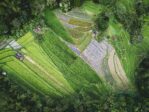 STEM Teaching Tool #98
STEM Teaching Tool #98
How might climate educators leverage the diverse funds of knowledge of rural communities?
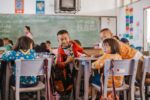 STEM Teaching Tool #99
STEM Teaching Tool #99
Elevating the cultural wealth of multilingual students, families, and communities in climate justice education
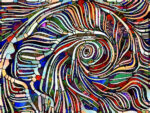 STEM Teaching Tool #101
STEM Teaching Tool #101
How can we better understand and work toward equity in STEM education?
 STEM Teaching Tool #102
STEM Teaching Tool #102
What is Climate Literacy?
 STEM Teaching Tool #103
STEM Teaching Tool #103


